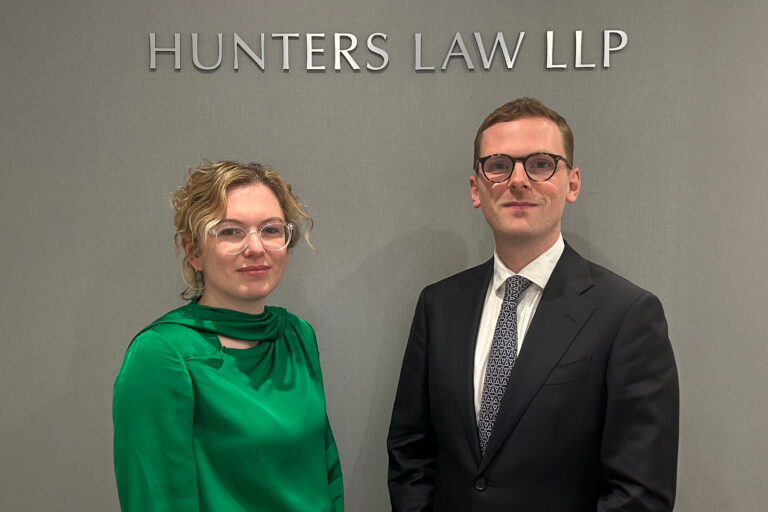Polly Atkins examines the role of litigation funders vs privileged material in family litigation in Litigation Finance Insider

Polly’s article was originally published on 11 February 2022 in Litigation Finance Insider and can be found here.
The role of litigation funders vs privileged material in family litigation
Practitioners unfamiliar with family law are often surprised that third party litigation funding is now common in family litigation. There are often no real winners and losers in financial proceedings on divorce. So how does the funding arrangement work? In divorce proceedings, the capital element of the loan along with any accrued interest will need to be repaid out of any award or financial settlement the client receives. But this mechanism is now under the spotlight due to litigation in which a funder is seeking to set aside a settlement agreed by the parties on the basis that it was structured so as to defraud the lender.
In recent years, litigation funding has not only become possible in financial cases on divorce, but has been endorsed as an important part of the family justice system as a means of enabling equality of arms where one party lacks access to funds. Under s22ZA Matrimonial Causes 1973, an application for a Legal Services Order (an order requiring the other party to make funds available for the payment of legal fees) cannot be granted unless the court is satisfied that the applicant is not reasonably able to secure a loan to pay for the services; this has been interpreted as requiring evidence of refusals by two commercial lenders of repute (as set out by e.g. Mostyn J in Rubin v Rubin [2014] EWHC 611 (Fam)).
Naturally, lenders approach funding decisions differently and each has distinct criteria that need to be met. Generally, they will look to ascertain the nature, location, and value of the couple’s assets together with an indication of the borrower’s likely award. Lenders are known to take specialist family law advice or have individuals in-house familiar with family law; and the loan is therefore the result of a sophisticated analysis of the claims with an awareness of what to expect at each stage.
However, the judgment from the recent case of LS v PS [2021] EWHC 3508 (Fam) has raised new questions about the position of litigation funders in the family justice system.
The case involved a litigation funder identified only as Q. Q intervened in financial remedy proceedings, applying to set aside a consent order which gave effect to an agreement reached at a private FDR (a species of settlement meeting commonly used in Family proceedings where negotiation follows an indication of likely outcome given by an independent, experienced and jointly instructed assessor) where it alleged that the husband and wife structured their settlement so as to deliberately prevent the wife from being in a position to repay her debt to Q (amounting to almost £1 million) such that Q was effectively bypassed. The set aside application is listed for a four-day hearing in March. As the reliability of the only security usually taken in such cases is under the spotlight, the outcome is awaited by the whole industry. However, the case raised a subsidiary issue as to the status of without prejudice communications in such circumstances.
At an interim hearing, Q sought disclosure of, and permission to admit, documents which had been generated in the context of the private FDR (pFDR) in order to present their claim for relief against statutory fraud under ss423-425 Insolvency Act 1986. The material Q wanted to utilise was all marked without prejudice and subject to without prejudice privilege. Furthermore, Family Procedure rules (specifically para 6.2 of Practice Direction 9A to the Family Procedure Rules) provides that nothing said, nor any admission made, in the course of an FDR can be admitted in evidence, and the same rules make clear that this protection is.. vital and is an essential prerequisite for fruitful discussion directed to the settlement of the dispute between the parties.
Clearly this bar to disclosure is at odds with a lender’s ability to adduce evidence, which shows how a settlement came about and therefore if it was fraudulently structured so as to avoid repayment obligations.
Mrs Justice Roberts did not comment on the merits of Q’s set aside application nor the detail of the privileged material upon which Q was hoping to rely, which included a recording of the virtual pFDR. However, she held that that under the law as it stood, the material remained privileged from disclosure and therefore could not be adduced at the final hearing.
Whilst the decision demonstrates that it is the litigant and not the funder that is in the driving seat of proceedings, this control is subject to protective mechanisms which tend to be found within the litigation funding agreements.
Funders expect to be able to manage their risks by monitoring the progress of the case and ensuring they are kept abreast of all developments throughout the proceedings which are comprised in contractual commitments entered into by the borrowing party client and often also undertakings to the same effect by that party’s solicitor. A breach of the loan agreement by the client can result in the funder calling in the loan and being able to demand repayment. By this means, while not party to the proceedings, a funder seeks some measure of control, and it is usual for the instructed solicitor to be required to alert the funder where steps are being taken averse to their interest. That provision certainly occurred in this case, which saw the solicitor parting company with the client during the pFDR itself.
The case grapples with the competing policy considerations engaged by, firstly, the importance of maintaining the confidentiality of the FDR process, and, secondly, the lender’s capacity to provide evidence in support of their claim that the consent order should be set aside for fraud. The inability of lenders to adduce such information could act as a deterrent to participation in the market. Yet the confidentiality of the FDR has, to date, been sacrosanct within the family justice system to maximise the prospects of settlement.
The judgment concludes with a footnote, in which Mrs Justice Roberts suggests that given the importance of litigation funding to the system the facts of this case might provide a basis for revisiting when, and in what circumstances, that bar might be lifted where a case can be established for justifying the introduction into proceedings of material covered by the FDR privilege. This may suggest a concern to protect the position of the litigation lenders and their role within the family justice system.
For the practitioner, the judgment reveals the alarming professional minefield in terms of the decisions that had to be made, on the hoof, by the solicitors concerned, as they observed their duties to their client coming into conflict with their commitments made to the funder.
It will be interesting to see whether these result in changes to the contractual arrangements that have become standard, and whether Mrs Justice Robert’s call to the Family Procedure Rules Committee is heeded.





